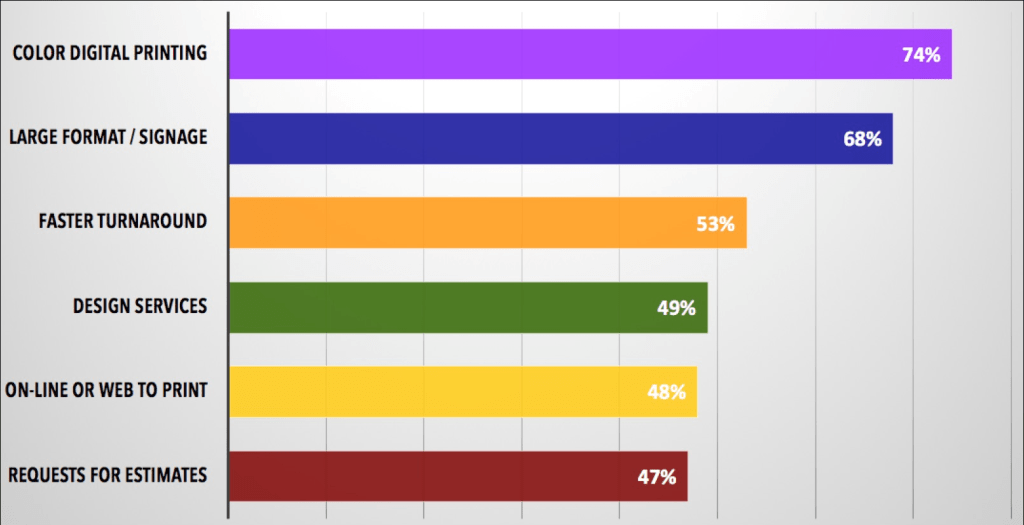- Howie Fenton
- |
- September 04, 2019
Just as the application mix for most in-plants will change so will the perceived value of the in-plant. In our first article about preparing for trends in 2020 we discussed staffing issues and four ways in-plants are addressing this trend. In this article we will discuss how the trends of in-plant's value will change based on how well the in-plant:
- Responds to changing customer needs by adding new products or services or
- Supports the addition of new products with the required infrastructure or the services needed to support those new services.
The value of the in-plant may be more accurately called the perceived value because it is subjective and objective. It is not just the price but staff friendliness, problem solving ability, and willingness to "go the extra mile." Furthermore, the perception of value is different for different in-plants. A transactional in-plant offering billing and statement printing is often valued differently than those that offer more graphic arts applications such as a retail in-plant. In addition, the perceived value can be different for different stakeholders (customers and supervisors). In a University the enrollment department and fundraising department both may value the in-plant but for different results the in-plant's services deliver based on the services the in-plant is providing the department.
Most importantly, the perception of the in-plant's value is going to change over time based on a changing mix of products and change in infrastructure or services required to support those products. For example, years ago the value of the HealthSouth in-plant was based on supplying forms to hospitals. However, as forms declined Danny Kirkland, director of the in-plant, had to make changes and today their value is based on large format, promotional products and insourcing. The services needed to support those products had to also change such as did the need for easy online ordering both for internal and external customers.
While your in-plant's mix of applications may not change as dramatically, it will change. We saw evidence of this in the soon to be released IPMA Study "The Next Generation Tactics and Strategies for In-Plant Service Providers." When participants were asked which products and services were growing, the two top answers were products (color digital printing and large format / signage) and the next four were services (faster turnaround, design, on-line ordering, requests for estimates).
Figure 5: Which products and services are growing?

IPMA 2019 Study "The Next Generation Tactics and Strategies for In-Plant Service Providers." Which products and services are growing?
Why are faster turnaround, design, on-line ordering, and requests for estimates important? Because this represents an increase in demand that in-plants need to address. These services may support existing products or may be required to support new products. That is not what is important. What is most important is that achieving or failing to meet an increase in demand will result in an increase or decrease in the perceived value of the in-plant.
4 Questions to Ask About Meeting Demand and Increasing Your Value
- Do you know if your customer's needs are changing? If you do not have a mechanism in place then you need to determine a way to find out (surveys, focus groups, etc).
- Do you know what new products and services to add to replace declining volumes of existing products and services? If you do not, then you need to consider strategic planning.
- If you know your customers' changing demands or what products and services you will add, do you have the staff, budget, software and hardware required to support those products? If you do not, then you need to start planning.
- Are your customers asking for something different? If the answer is yes, then do you know their needs, and do you have the staff, budget, software and hardware to meet this demand?
Summary
Consider addressing next year how well you will you maintain or increase your in-plant's perceived value. If your customer's needs are changing you need to respond with new products and the infrastructure or services to support them. If you are introducing new products you need to build the infrastructure or services to support them. The key to maintaining or increasing the in-plants perceived value is to build the infrastructure or services to support them. The next trend we will discuss for 2020 is the critical need to reduce cycle time.